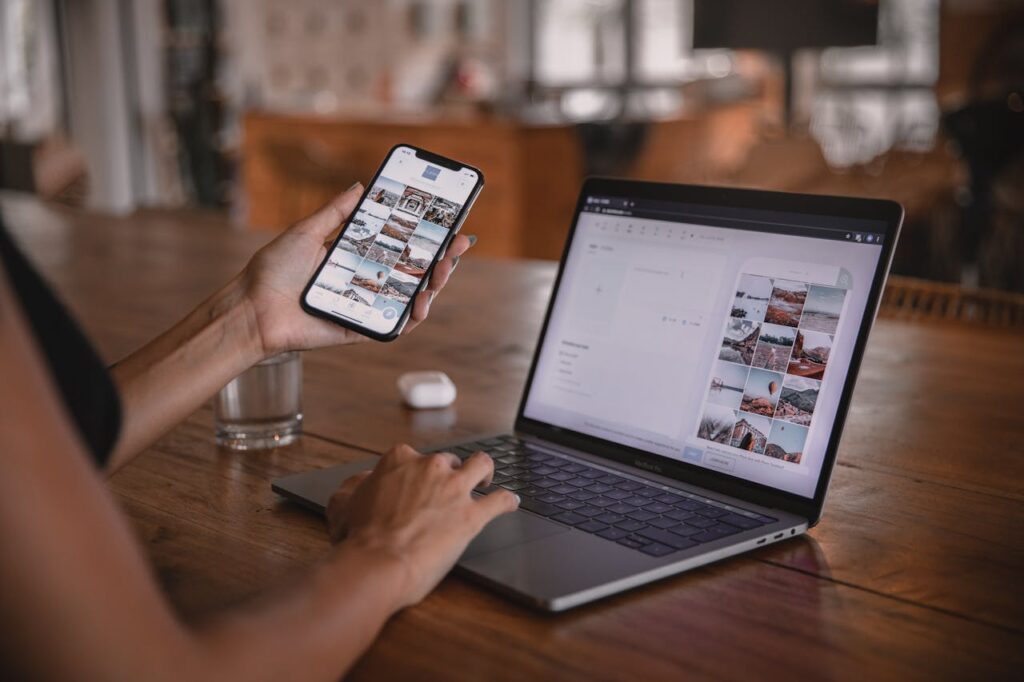You’ve spent hours perfecting that recipe, styling the shot, and capturing stunning photos. Your food looks incredible. But are those beautiful images actually helping you rank on Google and drive traffic?
In today’s competitive food blogging world, “pretty pictures” are just the starting point. If you’re not optimizing your images before you hit publish, you’re leaving valuable traffic (and potential income) on the table. Search engines can’t “see” your gorgeous photos like humans do; you need to give them the right signals.
Don’t let your hard work go unnoticed. Here are 5 essential image SEO secrets that will turn your visuals from simple decoration into powerful traffic-driving assets. But optimized images achieve their maximum impact when part of a strategic, year-long content plan.

Uploading images with generic names like IMG_7890.jpg or RecipeFinal_1.jpg tells Google absolutely nothing about your content. Your filename is your first, easiest opportunity to include relevant keywords.
Why it Matters: Search engines crawl filenames to understand image context. A descriptive name helps them categorize your image correctly and show it in relevant image searches.
How to Do It Right:
-), not underscores (_) or spaces.Example:
Photo1.jpgcreamy-roasted-tomato-soup-bowl.jpgjalapeno-cheddar-skillet-cornbread-slice.jpgMistake to Avoid: Keyword stuffing (e.g., best-easy-cornbread-recipe-cheddar-jalapeno-skillet-cornbread.jpg). Keep it natural!
Alt text (alternative text) is the description that appears if an image fails to load and is read aloud by screen readers for visually impaired users. But it’s also a critical piece of information for search engines.
Why it Matters: Alt text provides context to Google about the image content, further boosting its relevance for search queries. It’s also crucial for website accessibility (ADA compliance).
How to Do It Right:
Example (for the Cornbread):
CornbreadSlice of jalapeno cheddar cornbreadGolden slice of jalapeno cheddar cornbread on a plate next to cast iron skillet.Mistake to Avoid: Copy-pasting the filename or leaving it blank.
Huge image files are the #1 killer of website speed. And website speed is a major Google ranking factor. Your gorgeous, high-resolution photos might look amazing, but if they take 10 seconds to load, users will leave, and Google will penalize you.
Why it Matters: Faster load times improve user experience, reduce bounce rates, and directly impact your SEO rankings.
How to Do It Right:
The Workin’ Bees Advantage: All our images are delivered already optimized for web use, saving you this crucial but time-consuming step! Shop now!
Using the optimal file format ensures the best balance between image quality and file size.
Why it Matters: Different formats handle compression differently. Choosing the right one means faster load times and better visual fidelity.
The Breakdown:
Our Recommendation: Stick with high-quality JPGs for your main recipe photos, and explore WebP conversion (via plugins) for an extra speed boost.

Image SEO isn’t just about Google Search; it’s also about how your images perform when shared on social platforms, especially Pinterest – a massive traffic driver for food bloggers.
Why it Matters: Platforms like Pinterest and Facebook pull specific image information when a user shares your link. Optimizing for this ensures your content looks its best and gets maximum visibility.
How to Do It Right:
Optimizing your images for SEO isn’t an optional step; it’s a fundamental part of building a successful food blog. By implementing these five secrets—descriptive filenames, meaningful alt text, optimized file sizes, correct formats, and social sharing readiness—you’ll give your stunning photos the visibility they deserve.
It takes a little extra effort upfront, but the payoff in increased traffic, better rankings, and ultimately, more income, is well worth it.
Ready to save time and ensure your images are perfectly optimized from the start? Check out our ready-to-publish recipe sets, or learn more about our custom photography services where we handle all the technical details for you.